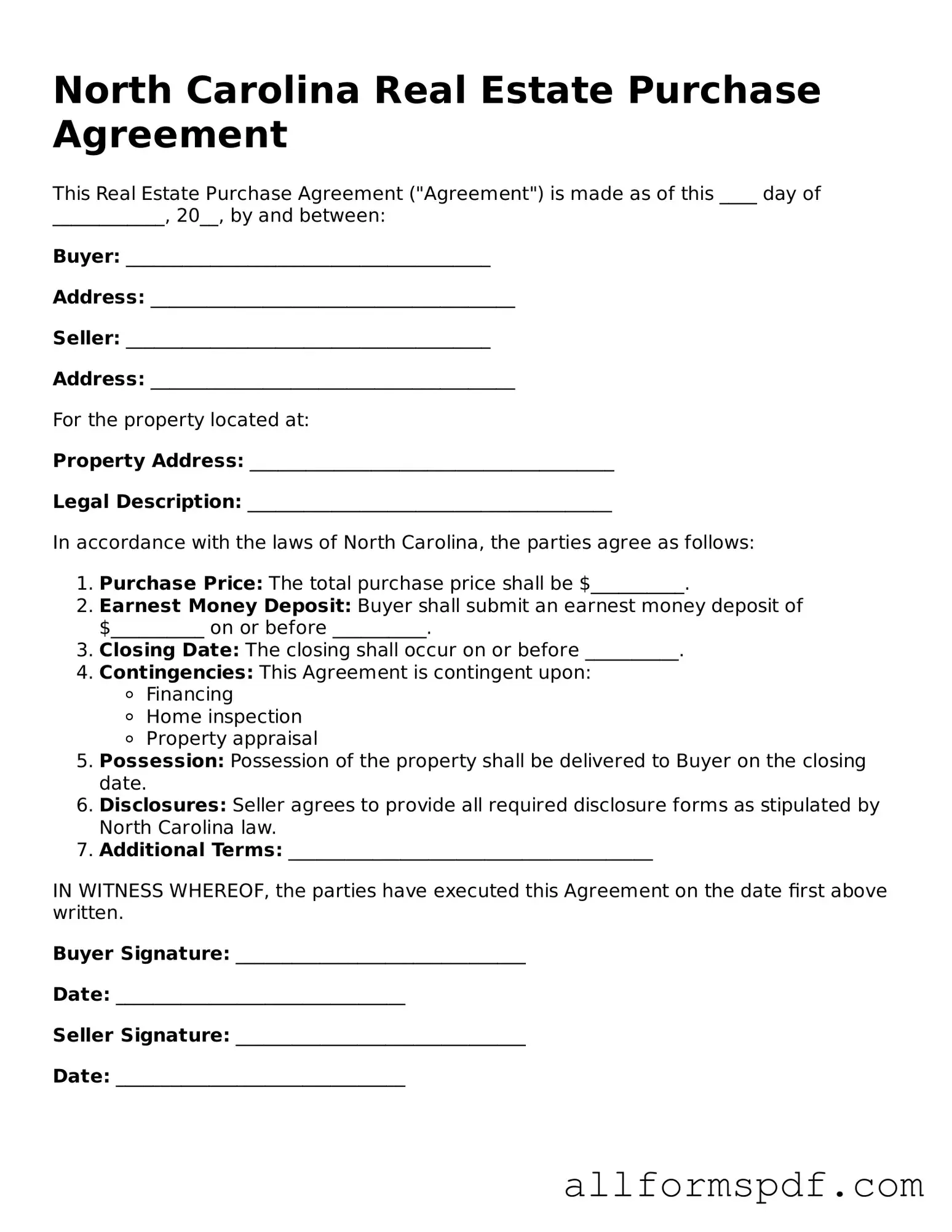When it comes to filling out the North Carolina Real Estate Purchase Agreement form, many buyers and sellers make common mistakes that can lead to confusion or even legal issues down the line. One of the most frequent errors is failing to provide complete information. This includes not listing the correct names of all parties involved or leaving out important details about the property. It's crucial to ensure that every piece of information is accurate and thorough.
Another common mistake is neglecting to specify the purchase price clearly. This can lead to misunderstandings between the buyer and seller. If the price is not clearly stated, it may create disputes later on. Always double-check that the numbers are correct and match what was agreed upon verbally.
People often overlook the importance of including contingencies in the agreement. Contingencies protect both parties by outlining conditions that must be met for the sale to proceed. Whether it’s securing financing or passing a home inspection, not including these can leave one party vulnerable.
Timing is another aspect that can be mishandled. Buyers and sellers sometimes forget to include important dates, such as the closing date or deadlines for inspections. These dates are crucial for keeping the transaction on track and ensuring that both parties meet their obligations.
In addition, many individuals do not fully understand the implications of the earnest money deposit. This deposit shows the buyer's commitment to the transaction, but if the terms surrounding it are not clear, it can lead to disputes. Clearly outline the amount and conditions under which it may be forfeited or returned.
Another mistake involves the property description. Failing to provide a detailed description can create confusion about what is being sold. It’s important to include not just the address, but also any relevant details about the property, such as boundaries or included fixtures.
Buyers often skip over the section regarding disclosures. Sellers are required to disclose certain information about the property, such as known defects or issues. If this section is left blank, it may raise red flags later in the process.
Many people also forget to review the agreement thoroughly before signing. Rushing through the document can lead to missed details that could have significant consequences. Taking the time to read everything carefully can save headaches later on.
Additionally, some individuals mistakenly assume that a verbal agreement is enough. The purchase agreement is a legally binding document, and relying solely on verbal promises can lead to misunderstandings. Always ensure that everything agreed upon is documented in writing.
Lastly, failing to seek professional advice is a common pitfall. Real estate transactions can be complex, and having a knowledgeable agent or attorney review the agreement can provide peace of mind. They can help identify potential issues and ensure that everything is in order before moving forward.
